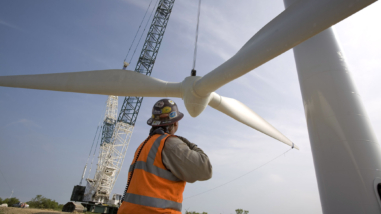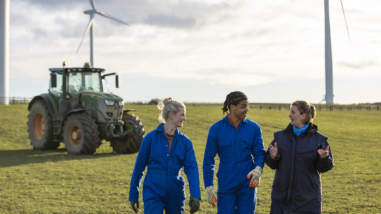Community members in Dallas, Texas, rally in support of strong clean energy policies. (Photo Credit: Sierra Club, used with permission)
Recent news from the Supreme Court may have raised some questions about U.S. climate change policy, but it hasn’t changed the inevitability of the country’s shift to clean energy.
On February 9, the Supreme Court put a surprise time-out on the Environmental Protection Agency’s Clean Power Plan, the first and only federal regulation intended to reduce global warming pollution from power plants in the United States. The Clean Power Plan, which requires states to cut carbon emissions from electricity production 35 percent by 2030, is also a cornerstone of the global climate accord that all but a handful of nations agreed to in Paris last December.
The justices voted 5-4 to halt implementation of the plan while the legal case against it, brought by coal companies and their allies, winds its way through the courts. Although the stay issued by the Court wasn’t necessarily a judgment on the merits of the case, some took it as a sign that five justices may eventually vote to permanently block the plan—a calculus thrown into doubt by the unexpected passing of Justice Scalia a few days later.
In short, this temporary uncertainty may delay but it certainly will not stop carbon regulation on power plants. The Supreme Court has already ruled three times that the EPA is obligated to limit carbon pollution from power plants. This duty has not changed and will not change.
While the legal and political drama at the Supreme Court unfolds, the Hewlett Foundation will continue to support groups working to speed the transition that’s already well underway—from dirty, expensive, fossil-based energy toward clean, affordable sources of energy like solar and wind.
A few years ago, the U.S. generated half of its electricity from coal. Today, thanks to low natural gas prices, strong energy efficiency policies, and regulations to decrease coal pollution in our air and water, it’s down to a third and still shrinking.
Additionally, thanks to the hard work of clean energy advocates and technology innovators across the country, renewable energy is booming. Investments in renewables and energy-smart technologies in the United States hit $56 billion in 2015, up 8 percent from 2014. Wind installations grew by 65 percent compared to 2014 levels and solar grew 14 percent. The solar industry alone added 30,000 new jobs to the U.S. economy in 2015. Many states are forging ahead to meet ambitious clean energy goals—in fact, almost half the states have publically stated that they will proceed with Clean Power compliance plans, despite the stay. The vast majority of electric utility executives—70 percent—support the Clean Power Plan or would like to see an even stronger version.
The Hewlett Foundation is proud to support groups like the American Lung Association, the NAACP, the Sierra Club, West Harlem Environmental Action, and many others working hard to protect the most vulnerable among us from the ravages of dirty air and climate change, and in so doing, protect us all.
We’re confident that one day not too far from now we’ll look back on today’s smoky coal and oil pollution like we do with yesterday’s cigarette smoke-filled restaurants and airplanes. With cleaner air and water secured, our only question will be why we didn’t clean it up sooner.




